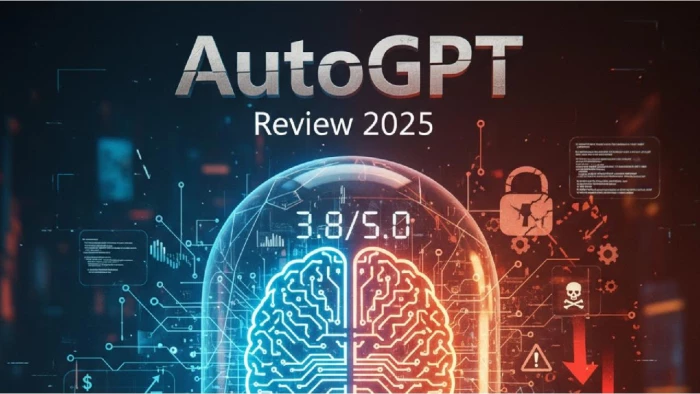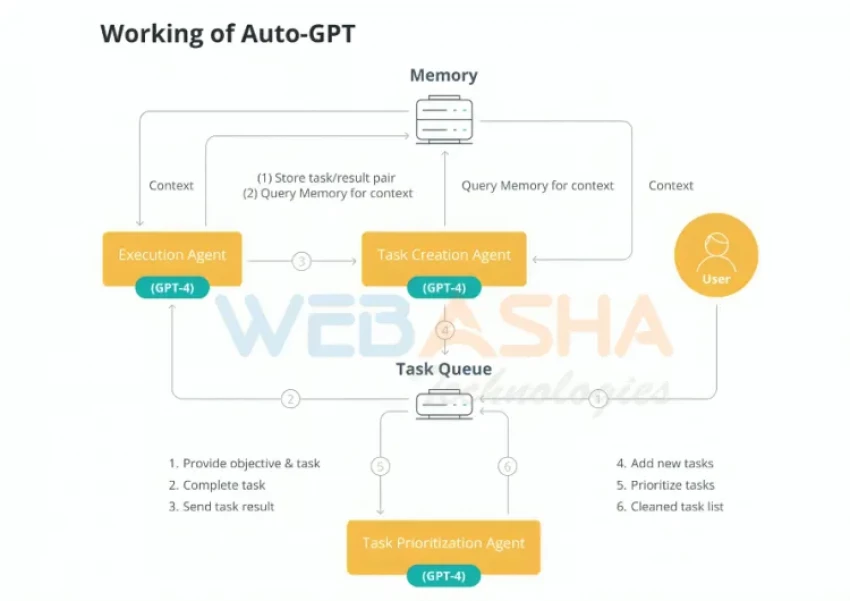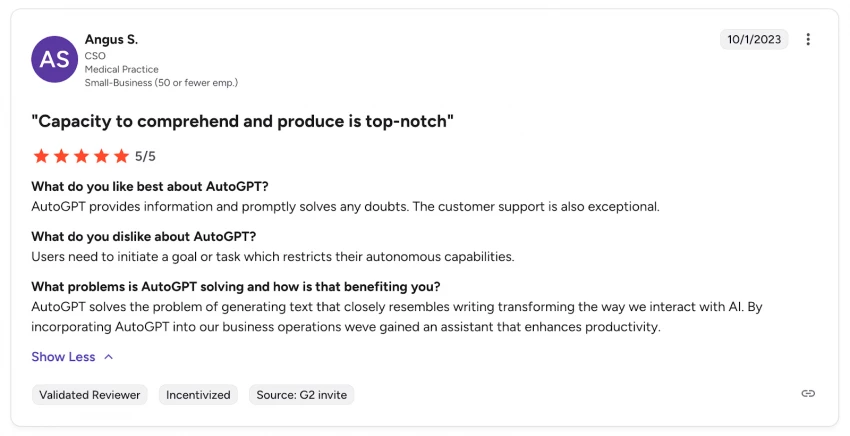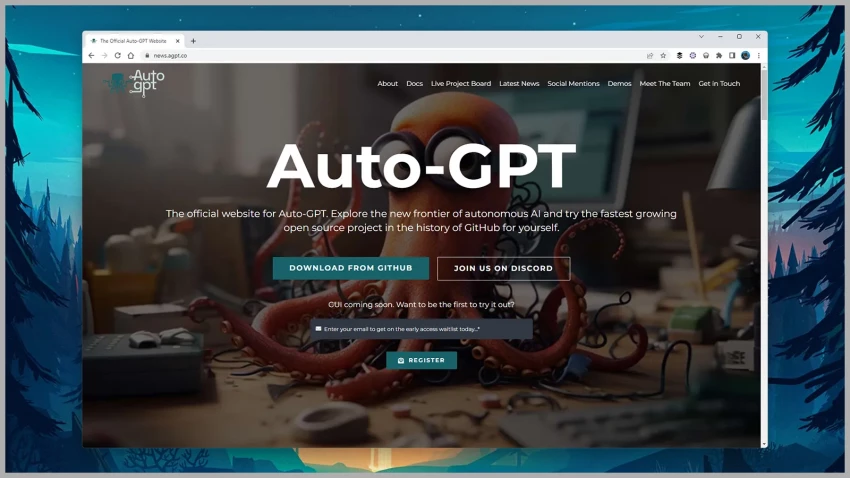

The Autonomous AI Agents Market is exploding, projected at nearly ten billion dollars in 2025. At the center of this movement sits AutoGPT, the open-source framework that shocked the world with its ability to take a single high-level goal and autonomously break it into actionable steps. It can search the internet, write code, manage memory, troubleshoot errors, and operate like a self-directed junior researcher.

But here’s the catch: AutoGPT is not plug-and-play. It demands time, technical ability, and ongoing API spending. This review breaks down what the tool can realistically do today, where it still fails, and whether the investment makes sense in 2025.
| Evaluation Criteria | Score | Rationale |
|---|---|---|
| Autonomy & Task Orchestration | 5.0 | Exceptional at breaking down complex goals and executing them with minimal human input. |
| Content Quality & Accuracy | 3.0 | Strong output but prone to hallucinations and logical loops. Requires oversight. |
| Cost Control (API Pricing) | 2.5 | The software is free, but LLM usage costs can escalate rapidly. |
| Technical Barrier to Entry | 2.0 | Requires Python, Git, Docker, and command-line skills for setup and maintenance. |
| Versatility & Customization | 5.0 | Fully open-source with plugins and modules for deep customization. |
Overall Score: 3.8/5.0 — A powerful but high-maintenance tool for technical users.

Most AI tools on the market are hosted, polished, subscription-based products. AutoGPT is the opposite. It’s a framework you deploy, configure, and customize yourself.
This is why the first decision is philosophical: Do you want an autonomous agent you can fully control? Or a polished assistant you simply chat with?
If you want complete autonomy and customization, AutoGPT is unmatched. If you want simplicity, it’s the wrong choice.
AutoGPT uses a goal-driven, recursive reasoning loop built on large language models. Instead of waiting for constant prompts, it thinks for itself.
You give AutoGPT a high-level objective.
Example: “Research electric vehicle market trends.”
The system immediately begins breaking this into smaller actions:
Workflows are built from Blocks — self-contained functional units such as:
AutoGPT stores context across long sessions and performs real-time research, giving it the behavior of a junior analyst who can work independently for long stretches.
AutoGPT is free, but using it effectively comes with real hurdles, as stated by users on G2.

Deployment requires:
This alone disqualifies most casual users.

Even though AutoGPT’s code is free, every step it thinks through costs tokens.
Examples of what burns tokens:
And because it’s autonomous, it often thinks far more than you expect.
Many users underestimate API consumption until they receive their first unusually large bill.
| Strategy | Why It Helps |
|---|---|
| Strict budgets and execution timeouts | Prevents infinite loops and runaway tasks. |
| Human-in-the-loop checkpoints | Stops the agent at key decision points. |
| Using cheaper models for basic tasks | Leave expensive models for final synthesis. |

AutoGPT excels at complex, multi-domain workflows. Here’s how it performed across three high-value categories.
Goal: Produce an EV market report.
Result: AutoGPT collected data, analyzed sentiment, compared competitors, and synthesized a report in under an hour — work that usually takes days.
Goal: Write a Python script for weather-data analysis.
Result: It generated the initial script, ran it, identified an error, and fixed the bug without manual debugging.
Goal: Pull a Wikipedia summary and automatically schedule daily posts to a social page.
Result: After setup, the agent chained tasks together flawlessly and executed them on schedule.
These examples show why autonomous agents are becoming so attractive: they perform tasks that would overwhelm standard chatbots.
Despite the power, AutoGPT is not a hands-free employee.
The model can invent facts, misinterpret data, or generate plausible-but-wrong information. All high-stakes outputs must be reviewed.
Ambiguous instructions are its kryptonite. It can:
This is the largest cost risk.
The interface remains unpolished and technical. Compared to commercial AI tools, AutoGPT feels like you’re operating behind the scenes of a complex machine.
| Aspect | AutoGPT | ChatGPT / Claude / Gemini |
|---|---|---|
| Interaction | Autonomous, minimal prompting | Conversational, user-driven |
| Ease of Use | Low | Very high |
| Setup | Technical and manual | Zero setup |
| Best Use Case | Multi-step workflows, research, code | Drafting, Q&A, general tasks |
| Cost Model | Variable API spend | Predictable subscription |
| Customization | Unlimited | Limited but stable |
AutoGPT is not a “better” version of ChatGPT; it’s a completely different category.
AutoGPT is a breakthrough technology with enormous potential, but only for the right users.
These users get massive value because they can manage the technical demands and control API spend.
For most general users, waiting for more polished, hosted autonomous agents makes far more sense.
AutoGPT is powerful but demanding. It delivers incredible autonomy, but at the cost of setup complexity, oversight needs, and unpredictable expenses.
It’s a high-reward tool for technical professionals and a risky experiment for everyone else.
Be the first to post comment!